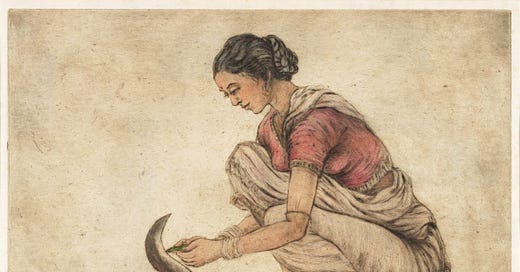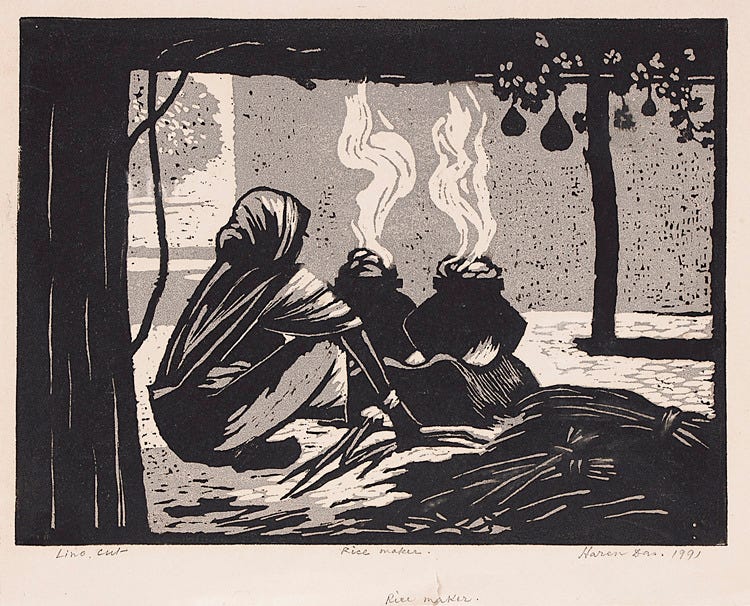The Evolution of the Bengali Cuisine: From Local Delights to International Delicacies
Words by Shiuli Sural
Welcome to the Brown History Newsletter. If you’re enjoying this labour of love, please do consider becoming a paid subscriber. Your contribution would help pay the writers and illustrators and support this weekly publication. If you like to submit a writing piece, please send me a pitch by email at brownhistory1947@gmail.com. Don’t forget to check out our SHOP and our PODCAST. You can also follow us on Instagram and Twitter.
The Evolution of the Bengali Cuisine: From Local Delights to International Delicacies by Shiuli Sural
If we talk about Bengal, we talk about food. This unique cuisine has made its mark so strongly across the globe that a conversation about the region inevitably means a conversation about its food. Today I’m going to tell you a story – of my food, my home. You’re probably thinking this is a tale of maach-bhaat, kosha mangsho and sondesh but Bengali food is much more than these touristy dishes.
The cuisine of Bengal originated and evolved in the Bengal region - the Eastern part of the Indian subcontinent which includes Bangladesh and the Indian states of West Bengal, Tripura and Assam's Barak Valley. This culinary style truly represents its diverse geographical setting. The staple foods, rice and fish, come from the traditionally renowned fertile agrarian plains and the seemingly inexhaustible rivers along the coasts of Southeastern India. The celebrated sweets of Bengal are mostly made using milk, ghee and butter, the result of dairy farming in the region. This remarkable landscape constitutes more than 222 million people, each household with its own recipe for each dish, reflecting an incredible amount of culinary expertise. The story of the cuisine of Bengal involves the complex and intricate interplay of heritage and diversity, religion and region, westernization and traditionality.
Around 5,000 years ago, rice emerged as a staple calorie resource as paddy cultivation came to Bengal from Southeast Asia. According to a government report from the 1940s, 3500 from the required 3600 calories for survival came from the consumption of rice. The rivers of the region brought seafood, especially fish, into the evolution of the cuisine. Rice and fish are still a very popular and common meal, hence the phrase “Maache-Bhaate-Bangali” which translates to “fish and rice make a Bengali”. Dal (lentils), another major staple, is mentioned in Bengali texts from the 15th century onwards. The text Mangalkavyas mentions different types of dals.






